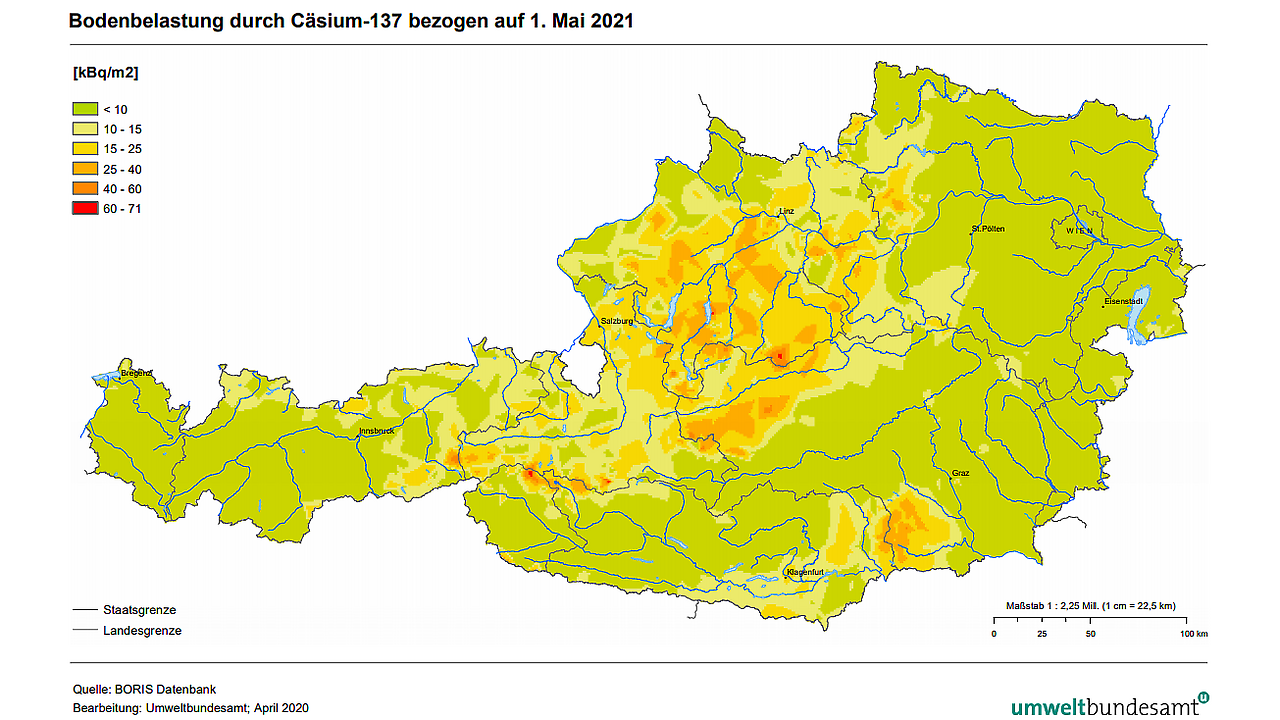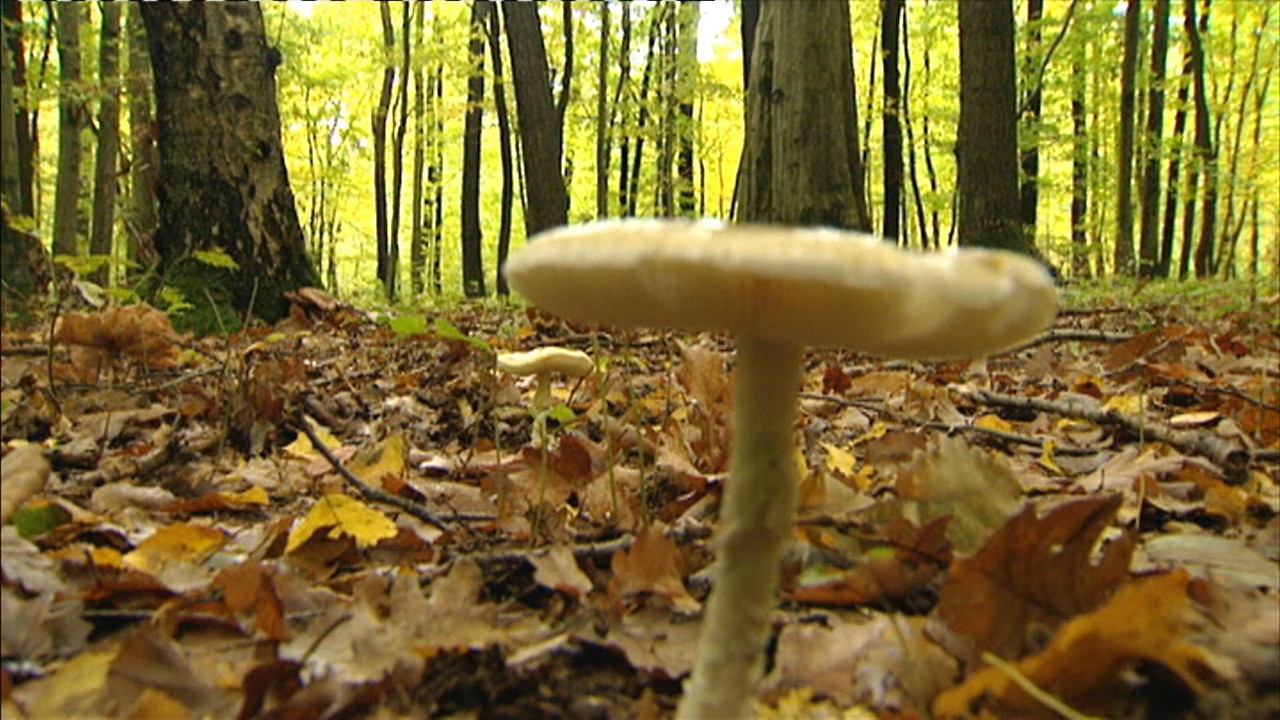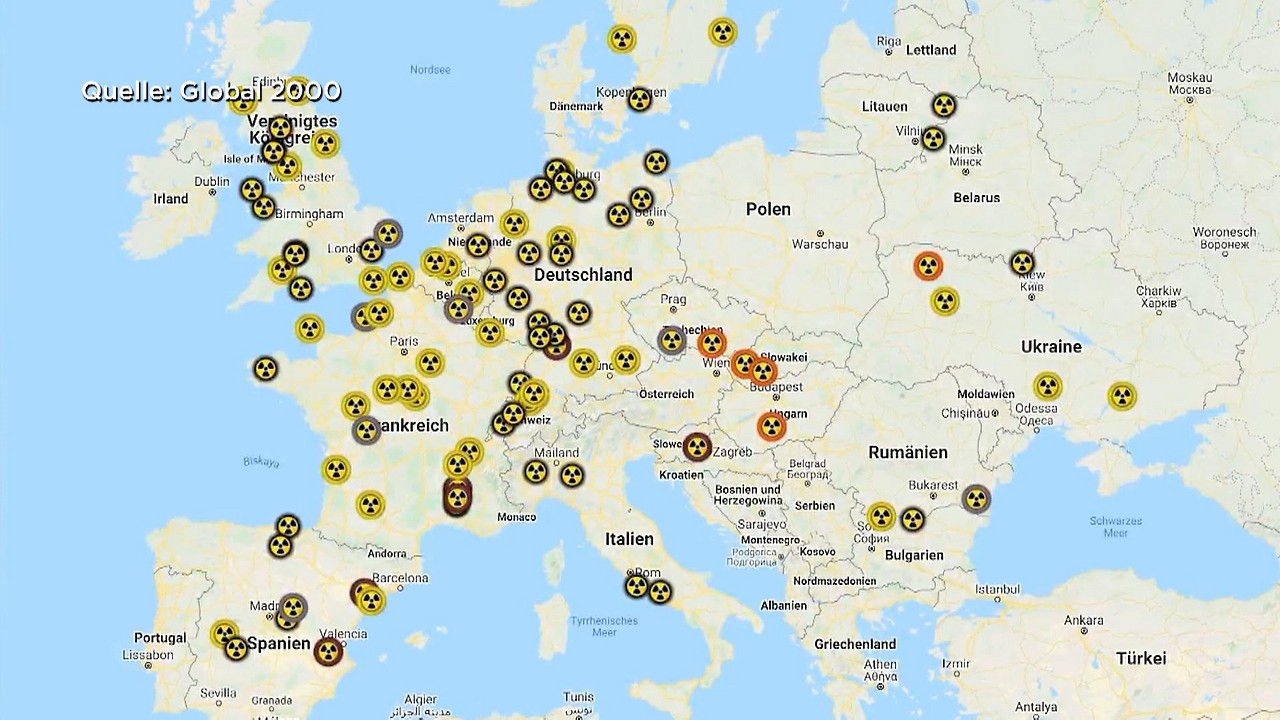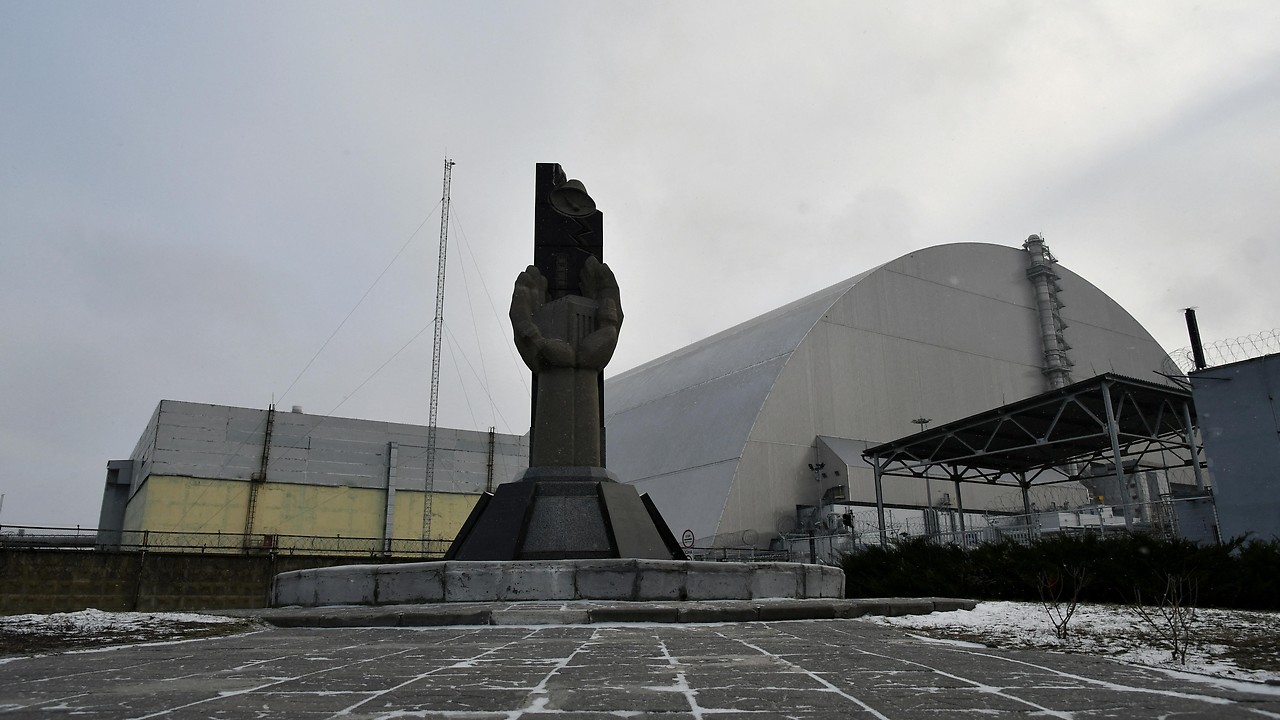Radioactive cloud caused fear – noe.ORF.at & More Latest News Here
“One was really at a loss as to what had to happen,” remembers Franz Blochberger (ÖVP), the state councilor responsible for civil protection at the time. In the morning hours of April 26, 1986, a power failure was simulated in a test run at the “Lenin” nuclear power plant in Chernobyl. This got out of control, reactor 4 of the nuclear power plant could no longer be cooled and exploded.
Radioactive particles rose in the flames, which the wind would eventually spread across Europe. But the public didn’t learn anything about it at first, and there was only a short report on Soviet television about an “accident” in a power plant, as the accident was initially called.
“Yes, something happened”
Only two days later did Sweden sound the alarm: Increased radioactive radiation was measured in a Swedish power plant, although there was no accident. “And only by tracing back the weather and wind situation was it possible to determine where that came from. It was only then that people in the Soviet Union admitted, ‘Yes, something happened,’” remembers Peter Stehlik, then State Secretary of the Lower Austrian Civil Defense Association.
Photo series with 8 pictures
On April 28, 1986, the APA (Austria Press Agency) published the first report in picture 1 at 7:36 p.m. It said: “In the Chernobyl nuclear power plant near the Ukrainian capital of Kyiv (…) there was an accident. A reactor was damaged, measures are currently being taken to eliminate the consequences of the accident, and help is being given to those affected.” The exact time of the accident was not clear from the report.
Radioactive cloud moves to Western Europe
A government commission would be set up in the Soviet Union to clarify the cause of the accident, it said. In fact, not only the north of Ukraine, where the accident happened today, was irradiated. The radioactive cloud mainly affected neighboring Belarus and western Russia, then spread towards Scandinavia and western Europe.
BORIS database / Federal Environment Agency
On April 29, Die Zeit reports in picture 1: “Nuclear catastrophe near Kyiv, one reactor is on fire, so far no clarity about the nature of the accident. Radioactive current moves to Scandinavia. The Soviet Union asks foreign countries for help. Radiation exposure has also increased slightly in Austria. However, it is not even a thousandth of the value that is considered harmful to health.”
April 29, 1986: ORF correspondent reports on the “incident” according to the Kremlin
Critics accused the then Health Minister Franz Kreuzer (SPÖ) of playing down the disaster. “For the Austrians there is no reason to panic. However, the current situation requires the utmost vigilance,” he said. The May 1 marches took place as planned. Radiation protectors, for example from the Seibersdorf nuclear research center (Baden district), also made rather reassuring comments.
In retrospect, however, it turned out that Austria was and is one of the most heavily polluted countries in Western and Central Europe. The Salzkammergut, the Welser Heide and the Hohe Tauern are particularly affected. In addition, the Lower Tauern and Southeast Carinthia. Heavy rain also caused radioactive fallout over Lower Austria.
“Nobody knew what was going to happen next”
“Nobody knew what was going to happen next. We weren’t specialists,” said Franz Blochberger, speaking of “very tense hours and days” when we sat together and thought about what to do. “It was a terrible time. We waited, informed the population and asked them to keep calm.”
Contemporary witnesses remember the Chernobyl disaster
Despite this, many people are concerned about the unseen danger. “Because you really didn’t know what was coming,” Inge Korntheurer remembers. “They said we shouldn’t dig in the ground and eat the vegetables like that,” adds Marion Hauser, who was just a child at the time. For Harald Ritthammer, “the scope was not really understood, at least not to this large extent.”
concerns of citizens
At that time, Peter Stehlik informed thousands of Lower Austrians at events – not an easy task. “The documents we received at the time were highly scientific, we had to break them down so that people – from university professors to unskilled workers – could understand them.” However, women were much more interested than men at the time, Stehlik remembers.
At the same time, atomic telephones were also set up – a hotline that concerned citizens could contact. The most frequently asked questions: How should one behave? What not to eat Can the children go outside? Play in the sandbox? The hotline was staffed around the clock. Stehlik also remembers a grandmother who fled to Italy with her entire family and wanted to know if she could come back.
Photo series with 12 pictures
At the same time, there were also operations at the border crossings to the Czech Republic and Slovakia. “There the vehicles were measured to see if they were contaminated, then cleaned in a kind of car wash, and then they were allowed to enter the country,” says former state fire chief Wilfried Weissgärber, who was then responsible for radiation protection in the state fire brigade association. People who wanted to tear down were also checked.
Grazing and sales bans
In Lower Austria, foods such as meat, milk and vegetables were contaminated with a hundred times the permitted limit. Franz Blochberger therefore issued a grazing ban, fresh vegetables could no longer be sold. “There were no empirical values, you had to rely on the doctors who carried out the tests in the laboratories.”
1986: Crisis team advises on measures in Lower Austria
Contaminated milk was stored until levels dropped and then processed into cheese. “Our aim was to ensure a secure supply of uncontaminated or very slightly contaminated food by measuring feed,” says Blochberger. However, warnings were given against consuming sheep’s milk and vegetables. “You can see how vulnerable society is.”
Many farmers had their backs to the wall, says the ÖVP politician. Because exports were stopped immediately, prices collapsed completely. “One was not prepared for such a worldwide catastrophe. We didn’t know how and when to release this knob.”

Austria
100 years Lower Austria
In addition, school hiking days were banned, outdoor pools and sports fields were closed. The authorities criticized the behavior of the population as careless. “Some of the population takes the radioactive contamination much too lightly,” complained a health advisor. Only after several months did the experts cautiously give the all-clear. “It was a real sigh of relief,” says Blochberger. Nationwide, there was damage of around 100 million euros.
Radioactive contamination remains
But even 36 years after the reactor accident, the effects in Austria can still be measured. According to the Ministry of Health, radioactive cesium-137 can still be found in wild mushrooms and game meat. In principle, these foods can be eaten largely without hesitation, but there are recommendations as far as chanterelles, chestnut boletus and game meat are concerned.

BORIS database / Federal Environment Agency
Chestnut boletes are still not recommended
From a radiological point of view, porcini mushrooms can be enjoyed without hesitation from practically all regions of Austria. Chanterelles do not pose a health risk either. However, for precautionary reasons, chanterelles from regions with higher levels of pollution should not be consumed in large quantities. Areas with higher levels of pollution can be found, for example, in western Lower Austria. Chestnut boletes should generally not be eaten.
The ministry regularly analyzes the contamination of wild mushrooms and game meat as part of studies. A recent study on game meat showed that around ten percent of the wild boar and around four percent of the deer examined had cesium-137 levels above the limit of 600 becquerels per kilogram. A second study examined wild boar meat from the trade, but even the maximum value was well below the limit.

ORF
Radioactive cesium-137 can still be found in wild mushrooms
And the soil in Austria is still contaminated with radioactive caesium-137. The highest values are in Upper Austria, Carinthia, Salzburg and Styria, as announced by the Federal Environment Agency. The regional differences are due to the amount of precipitation in the days after the reactor accident.
Fully automated measurement network in Austria
As early as 1975, the then Federal Ministry of Health and Environmental Protection began to set up the early warning system for radiation in order to quickly identify and assess large-scale radioactive contamination. In 1986 it was the only fully automated measurement network in Europe. In the meantime, comparable systems have been set up in all European countries. The Federal Environment Agency has been operating the Austrian early warning system for radiation since 2003 on behalf of the Ministry of the Environment.
shipment notice
“Radio Lower Austria in the morning”, August 22, 2022
At the time of the Chernobyl accident, only simple methods for estimating the direction in which the radioactive cloud was moving were available. Today, organizations such as ZAMG use complex computer simulations to calculate the transport, dilution and radioactive decay of pollutant clouds and the deposition of pollutants on the ground through sinking and washing out with rain or snowfall.
The establishment of the automatic Austrian weather measurement network, which now has 280 stations, was a direct result of the Chernobyl disaster. The aim at that time was to obtain very detailed information about the wind near the ground and the precipitation in the future in order to be able to quickly estimate the direction of the radioactive cloud in the event of an accident in a nuclear power plant close to the border.

ORF
The danger of a super meltdown remains
And not without reason. Because many countries in the immediate vicinity of Lower Austria still rely on nuclear power, there are only about 55 kilometers between Dukovany (Czech Republic) and Horn. Nuclear power plants have a lifespan of 30 to 40 years. There are currently 14 nuclear power plants in operation in the Czech Republic, Slovakia and Hungary, nine of which will reach the end of their service life at the end of next year. It is still unclear whether they will then be switched off.
For Lower Austria, this means that you still have to live with the danger of a super meltdown. “Of course something can happen, there are always human errors,” emphasizes Peter Stehlik and hopes: “If it’s possible, please don’t retrofit, but let it be phased out.” Lower Austria has also been pushing for years to phase out nuclear energy. With sun, wind and water, there are enough alternatives for reliable electricity production.

APA/AFP/GENYA SAVILOV
A memorial to commemorate the catastrophe, with the new sarcophagus over the destroyed reactor in the background
Expensive consequences of a super meltdown
In Chernobyl, meanwhile, a new protective cover had to be built around the damaged reactor block at a cost of 1.5 billion euros. The structure is 109 meters high – higher than the Statue of Liberty – and spans 257 meters, wider than the Colosseum in Rome. That’s big enough to enclose the old nuclear sarcophagus that workers built in 1986 in about 200 days but threatened to collapse.
Because of the high radiation exposure directly at the accident reactor, the new protective cover was designed with some distance to it. In November 2016, the 36,000 ton shell was slid over the old sarcophagus on special rails. It’s supposed to last 100 years. The exact number of victims is still unclear: while Greenpeace assumes more than 90,000 dead, the World Health Organization speaks of up to 17,000 dead.
I have tried to give all kinds of news to all of you latest news today 2022 through this website and you are going to like all this news very much because all the news we always give in this news is always there. It is on trending topic and whatever the latest news was
it was always our effort to reach you that you keep getting the Electricity News, Degree News, Donate News, Bitcoin News, Trading News, Real Estate News, Gaming News, Trending News, Digital Marketing, Telecom News, Beauty News, Banking News, Travel News, Health News, Cryptocurrency News, Claim News latest news and you always keep getting the information of news through us for free and also tell you people. Give that whatever information related to other types of news will be
All this news that I have made and shared for you people, you will like it very much and in it we keep bringing topics for you people like every time so that you keep getting news information like trending topics and you It is our goal to be able to get
all kinds of news without going through us so that we can reach you the latest and best news for free so that you can move ahead further by getting the information of that news together with you. Later on, we will continue
to give information about more today world news update types of latest news through posts on our website so that you always keep moving forward in that news and whatever kind of information will be there, it will definitely be conveyed to you people.
All this news that I have brought up to you or will be the most different and best news that you people are not going to get anywhere, along with the information Trending News, Breaking News, Health News, Science News, Sports News, Entertainment News, Technology News, Business News, World News of this made available to all of you so that you are always connected with the news, stay ahead in the matter and keep getting today news all types of news for free till today so that you can get the news by getting it. Always take two steps forward
Credit Goes To News Website – This Original Content Owner News Website . This Is Not My Content So If You Want To Read Original Content You Can Follow Below Links



Comments are closed.